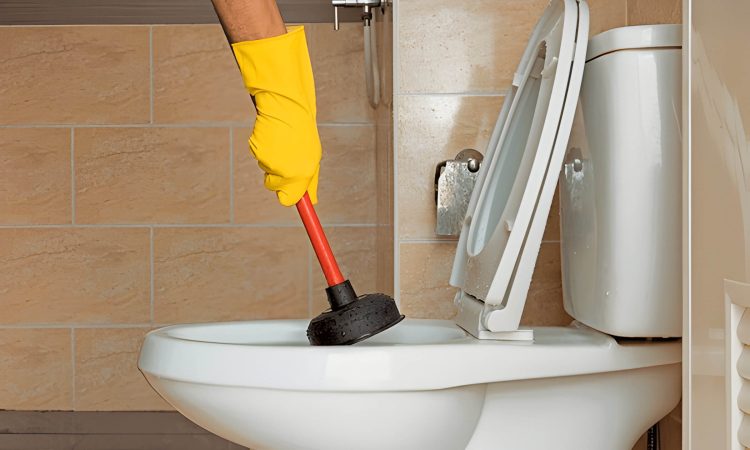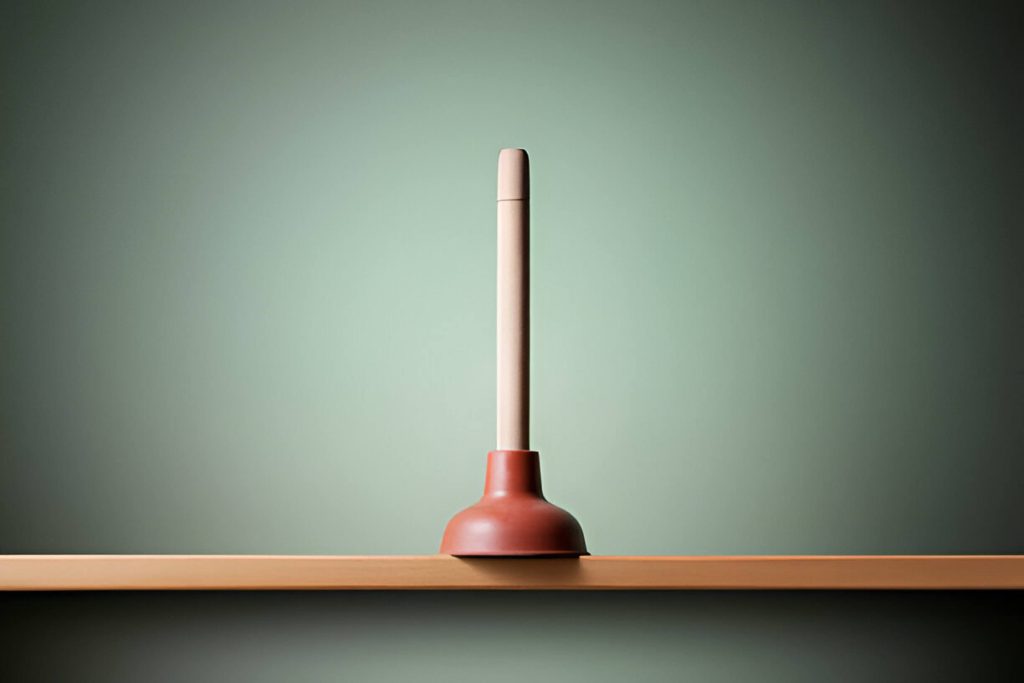
Dealing with a clogged toilet can be frustrating, but with the right knowledge and tools, you can fix it efficiently. This guide covers what causes clogs, how to prevent them, and essential unclogging tools. You’ll learn plunging techniques, using plumbing snakes, and natural solutions to restore your toilet quickly. We’ll also discuss when to call a professional plumber for stubborn clogs. Read on for effective bathroom maintenance tips and tricks.
Understanding the Basics of Toilet Clogs
Toilet clogs are a common household issue that can cause significant inconvenience. Understanding what clogs toilets and how to prevent these blockages is essential for maintaining a smoothly functioning bathroom.
Common Causes of Toilet Clogs
Several factors can lead to toilet clogs. One of the most frequent culprits is flushing inappropriate items down the toilet. Items such as sanitary products, excessive toilet paper, wipes labeled as “flushable,” and even small toys can obstruct the pipes. Additionally, older plumbing systems might be more susceptible to clogs due to narrow pipes or buildup from years of use.
How to Unclog a Toilet
When faced with a clogged toilet, there are several methods you can try before calling a professional plumber. A plunger is often the first tool people reach for; make sure you use it correctly by creating a tight seal around the drain and applying firm pressure in an up-and-down motion. If plunging doesn’t work, a toilet auger or snake may be necessary to break up or retrieve whatever is causing the obstruction.
For more stubborn clogs, pouring hot water mixed with dish soap into the bowl can sometimes help dissolve greasy blockages. Chemical drain cleaners are another option but should be used sparingly and with caution due to their potential damage to pipes and septic systems.
Preventing Toilet Clogs
Preventing toilet clogs starts with being mindful about what goes down your toilet. Only flush human waste and minimal amounts of toilet paper, everything else should go in the trash bin. Regular maintenance like periodic flushing with hot water can also help keep your pipes clear.
In addition, educating all household members about proper flushing habits will go a long way in preventing future issues. By understanding these basics and taking preventive measures, you can keep your toilets running smoothly and avoid inconvenient blockages.
Essential Tools You’ll Need to Unclog Your Toilet

When faced with a clogged toilet, having the right tools on hand can make all the difference. Here are some essential items you’ll need to tackle this common household issue effectively.
First and foremost, a plunger is your go-to tool for unclogging toilets. Opt for a flange plunger, which has an extended rubber flap to create a better seal and generate more powerful suction. This simple yet effective tool can often resolve minor clogs with just a few firm plunges.
For more stubborn blockages, a plumbing snake or toilet auger may be necessary. These tools are designed to reach deeper into the pipes than a plunger can, breaking up or retrieving whatever is causing the clog. A toilet auger, in particular, has a flexible shaft that can navigate the curves of your toilet’s drain without causing damage.
Don’t forget to wear rubber gloves when dealing with any plumbing issues. They protect your hands from bacteria and other contaminants that may be present in the water or on surfaces around the toilet.
Additionally, keep a bucket nearby to catch any overflow water or debris that might come out during the unclogging process. This will help you maintain cleanliness and prevent further messes in your bathroom.
Having these household tools for unclogging at your disposal ensures you’re well-prepared to handle any unexpected clogs quickly and efficiently.
Step-by-Step Guide How to Unclog a Toilet Using a Plunger
Unclogging a toilet can seem daunting, but with the right technique and tools, it becomes a manageable task. Here’s a step-by-step guide on how to use a plunger correctly to clear a clogged toilet.
Step 1: Choose the Right Plunger
Ensure you have the correct type of plunger. A flange plunger, which has an extended rubber flap beneath the cup, is designed specifically for toilets and creates a better seal.
Step 2: Prepare the Area
Before you begin plunging, place old towels or newspapers around the base of the toilet to catch any spills. This will help keep your bathroom clean during the process.
Step 3: Positioning the Plunger
Insert the plunger into the toilet bowl and ensure that it completely covers the drain hole. The flange should fit snugly inside for maximum suction.
Step 4: Submerge and Seal
Make sure there is enough water in the bowl to cover at least half of the rubber cup of your plunger. If not, add water manually. This helps create an effective seal needed for plunging techniques for unclogging toilets.
Step 5: Start Plunging
With a firm grip on the handle, push down gently at first to expel any air trapped in your plunger. Then begin plunging vigorously up and down while maintaining that tight seal over the drain hole. Effective plunging tips include using quick and forceful motions without lifting off too much between thrusts.
Step 6: Check Progress
After about 15-20 seconds of consistent plunging, remove your plunger carefully to see if water starts draining properly. If not, repeat steps as necessary until you achieve success.
By following these steps on how to use a plunger correctly, you’ll be well-equipped with efficient plunging techniques for unclogging toilets effectively whenever needed!
When and How to Use a Plumbing Snake or Toilet Auger
When faced with a stubborn clog, knowing when and how to use a plumbing snake or toilet auger can save you time and prevent potential damage to your plumbing system. These tools are designed to tackle blockages that standard plungers can’t handle, making them essential for any homeowner.
To begin using a plumbing snake effectively, first identify the location of the clog. For sinks or bathtubs, insert the snake into the drain and gently push it forward while rotating the handle. This action helps break up and dislodge any debris causing the blockage. Continue feeding the snake until you feel resistance lessen, indicating that the clog has been cleared.
For toilets, a toilet auger is more appropriate due to its design. To use a toilet auger correctly, position the curved end of the tool into the bowl’s drain opening. Slowly crank the handle while applying gentle pressure; this allows the auger’s head to navigate through bends in your toilet’s trap without scratching or damaging it. As with a plumbing snake, continue turning until you feel resistance reduce significantly.
Both tools offer effective solutions for stubborn clogs when used properly. Remember always to exercise caution and avoid excessive force which could harm your pipes or fixtures. With these tips on how to use these essential tools, you’ll be well-equipped to maintain clear drains and functioning toilets in your home.
Dissolving Toilet Clogs with Natural and Chemical Solutions
When faced with a stubborn toilet clog, it’s essential to know the various methods available for resolving the issue effectively. Two primary approaches include natural solutions and chemical drain cleaners. Each method has its own set of advantages and precautions.
One popular natural solution is the baking soda and vinegar method. This technique involves pouring a cup of baking soda into the toilet bowl, followed by two cups of vinegar. The mixture will create a fizzing reaction that can help break down minor clogs. Allow this combination to sit for about 30 minutes before flushing with hot water to see if the clog has dissolved.
On the other hand, chemical drain cleaners offer a more aggressive approach but come with important safety considerations. These products are formulated to dissolve tough clogs quickly but can be harmful if not used correctly. Always follow manufacturer instructions closely, wear protective gloves and eyewear, and ensure proper ventilation when using these chemicals.
Natural clog dissolvers such as enzyme-based cleaners are another alternative worth considering. These products use natural enzymes to break down organic material in clogs without causing damage to your plumbing or posing significant health risks.
Whether you opt for natural methods like baking soda and vinegar or choose chemical solutions, it’s crucial to understand how each works and take appropriate safety measures. This knowledge ensures that you can effectively address toilet clogs while maintaining household safety.
Troubleshooting Persistent Toilet Clogs and When to Call a Professional Plumber
Persistent toilet clogs can be a frustrating and inconvenient issue for any homeowner. While some minor clogs can be resolved with DIY methods, there are certain situations where professional plumbing services become necessary. Recognizing the signs that you need professional help is crucial to prevent further damage and ensure the safety of your plumbing system.
One of the key signs you need professional help is if you’ve tried multiple DIY solutions, such as plunging or using a drain snake, but the clog persists. This could indicate a more severe blockage deeper in the plumbing system that requires specialized tools and expertise to address effectively.
Another indicator is if you notice recurring clogs in multiple toilets or drains throughout your home. This could suggest a larger issue within your main sewer line, which is beyond the scope of typical DIY fixes and demands professional attention.
Safety concerns with severe clogs should not be overlooked. Attempting to forcefully clear a stubborn clog can result in damage to your pipes or even cause sewage backup, posing health risks due to exposure to harmful bacteria and contaminants. Professional plumbers have the training and equipment needed to handle these situations safely without compromising your home’s plumbing integrity.
While DIY methods can sometimes resolve minor toilet clogs, persistent or severe issues warrant calling a professional plumber. Understanding when to seek expert help not only saves time and effort but also ensures the long-term health and safety of your plumbing system.
Keep Your Bathroom Function by Preventing Future Toilet Clogs
Maintaining a functional bathroom is essential for any household, and one of the key aspects of this is preventing future toilet clogs. By taking proactive measures, you can save yourself from the inconvenience and potential damage caused by a clogged toilet.
Firstly, be mindful of what you flush. Items such as sanitary products, wipes (even those labeled as “flushable”), paper towels, and excessive amounts of toilet paper can easily cause blockages. Educate all members of your household about what should and shouldn’t go down the toilet to minimize risks.
Regular maintenance is also crucial. Consider using a plunger or an enzyme-based cleaner periodically to keep your pipes clear. These cleaners break down organic materials that may be building up in your plumbing system.
Additionally, check for signs of trouble before they become significant issues. Slow draining water or gurgling noises can indicate a developing clog that needs attention sooner rather than later.
By following these simple yet effective strategies, you can ensure that your bathroom remains functional and free from the disruptions caused by clogged toilets. Prevention is always better than cure when it comes to plumbing issues, so take these steps seriously to maintain a smooth-running household.




